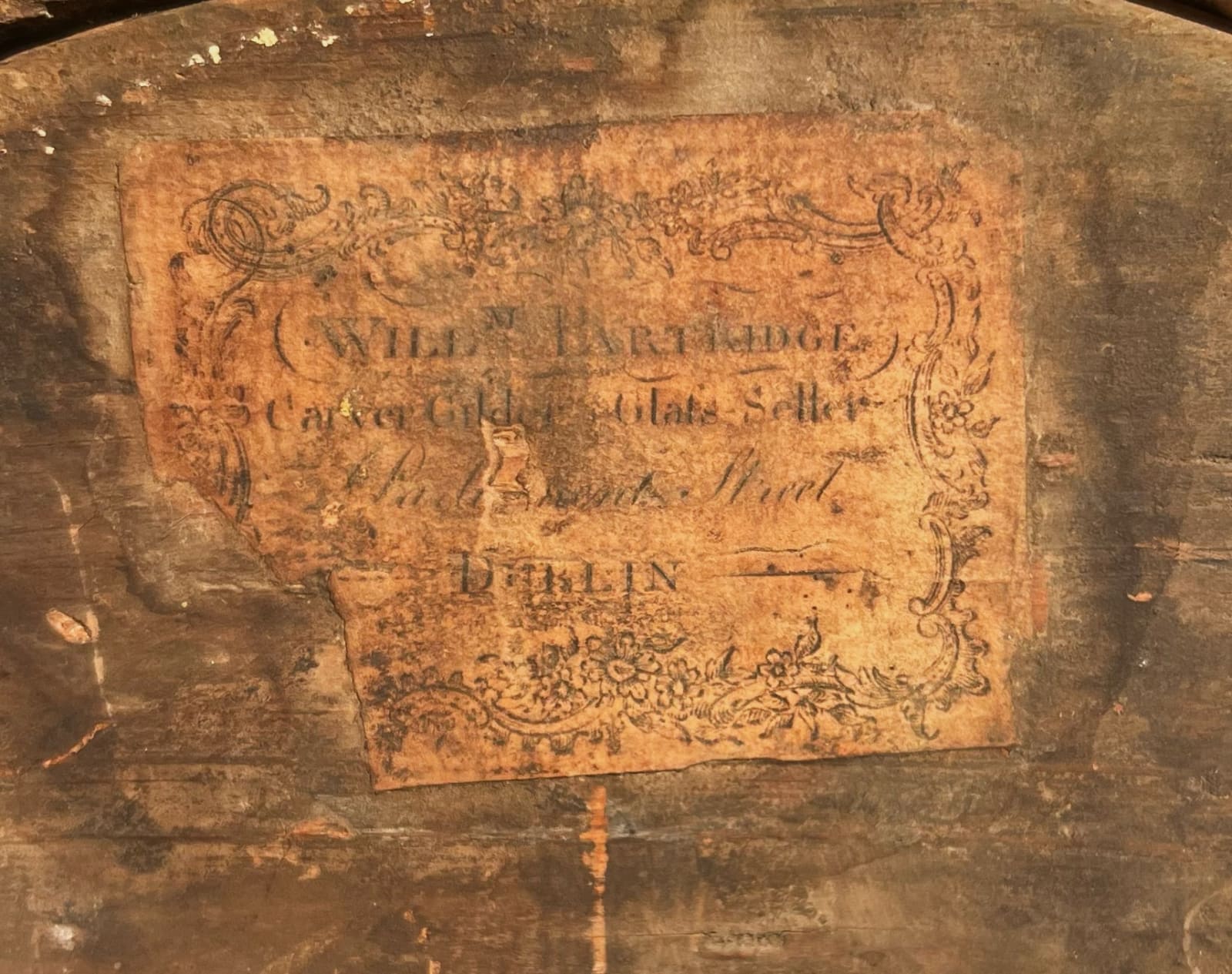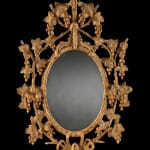Mirrors
A GEORGE III IRISH GILTWOOD MIRROR BEARING THE TRADE LABEL OF WILLIAM PARTRIDGE OF DUBLIN
W: 25” / 64cm
Provenance
Retaining William Partridge’s maker’s label on the reverse, reading: ‘WILL.M PARTRIDGE / Carver Gilder & Glafs-Seller / Parliament Street / DUBLIN’
Private Collection: Dublin, Ireland
Literature
The Knight of Glin and Peill, James, Irish Furniture (New Haven & London, 2007), pp. 170, 266
The Knight of Glin, ‘Dublin Directories and Trade Labels’, Furniture History (1985), p. 271, fig. 32
Simon, J., ‘Thomas Johnson’s “The Life of the Author”’, Furniture History, Vol. 39 (2003), p. 49 (42)
COMPARE
Example by John Booker, illus. Glin & Peill, Irish Furniture (2007), p. 147, fig. 201
Examples at Castletown, Co. Kildare, attributed to Richard Cranfield, 1768, illus. Glin & Peill, Irish Furniture (2007), p. 126, fig. 171
This charming and intricately carved mirror was made by William Partridge between 1774 and 1782 when he was established at his premises in Parliament Street, Dublin. Its design shows the influence of Thomas Johnson (d. 1778), the master carver and designer, who worked under Partidge during his early career between 1753 and 1755. The vigorously naturalistic branches or vines, ending in twigs, of the present mirror are a pure expression of Johnson’s rustic fantasy.
The original oval mirror plate is retained by a rope-twist frame connecting branches and vines issuing leaves and berries. The twig branches are tied in a bow at the apron and the whole is surmounted by c-scroll-carved fronding beneath crossed-vine branches carved with leaves and berries. The mirror retains the original gilding. Of particular note is the delightfully detailed treatment of the surface of the leaves.
Two pairs of mirrors bearing Partridge’s paper maker’s label survive, one at Leixlip Castle, Co. Kildare and another sold from Newtown Park, Co. Dublin, Christie’s, 20 September 1976, lot 12 (illus. Glin, Furniture History (1985), fig. 32 & Glin & Peill, Irish Furniture (2007), p. 266), in addition to a large single giltwood pier glass (illus. Glin & Peill, Irish Furniture (2007), p. 170).
The mirror is also closely comparable to the work of two of Partridge’s Dublin contemporaries. A mirror bearing the trade label of ‘JOHN BOOKER AT NO 6. Efsex Bridge, Dublin’ in a private collection, illus. Glin & Peill, Irish Furniture (2007), p. 147, fig. 201, is a nearly identical model, as is the set of three oval giltwood pier glasses supplied for the dining room at Castletown, Co. Kildare, almost certainly by Richard Cranfield, in 1768, illus. Glin & Peill, Irish Furniture (2007), p. 126, fig. 171.
In his autobiography, Life of the Author, Johnson described Partridge as ‘a principal carver’ supplying frames to looking-glass shops. According to Johnson, ‘He promised me as much work as would serve myself, my three apprentices, and four journeymen, provided I would work for him only. To this I agreed’. Amongst Johnson's work for Partridge was a commission for Lady Arabella Denny that included a Gothic chimneypiece. It is fascinating to consider the influence that William Partridge may have had on the young Johnson during his formative years and the contribution he may have made to the development of this future master of English carvers’ pieces.



